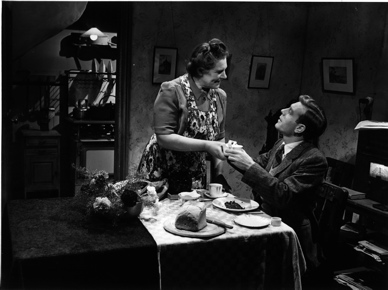only magazine
↵ home
it couldn't happen to me... could it?

By mosang
Thursday February 15, 2007
How did Britons survive the years following the carnage of World War II? Healthy doses of fear, guilt and the all-knowing social eye, according to the six short informational films of How to Survive the 1940s , originally produced by the UK’s Central Office of Information. Using painstaking details of daily life and Hitchcock-like direction and suspense, the films alternately whisper and hammer home the correct methods for productive living. Cooperation–no one person is more important than another. Paranoia–expounding repeatedly on basic fears of health and child safety. Guilt–narrators both on and off screen hector the viewer with harsh lectures and unresolved crises that linger in the mind. The filmmaking techniques on display are well used. Light and shadow, music, camera angles, plot–all are used to dramatic effect. Characters face existential quandaries and question the concepts of the individual versus the collective. They converse with the camera, respond to the narrator, and switch off the orchestral score. Hell, one guy even walks out of the movie itself. And when they dare to blithely challenge the films’ wisdom? They suffer, even die. Food poisoning. Sickly children. Robbery. Syphilis. Car wrecks. The Central Office of Information, whether with benevolent or malicious intent, preyed on the nerves of a populace freshly emerging from the chaos and death of war. Its treatment of the British public betrays an insistence on and yearning for control both pitiful and laughable.
How to Survive The 1940s: Post-War Public Information Films Plays at The Cinematheque on Feb 16-17 at 7:30 pm
